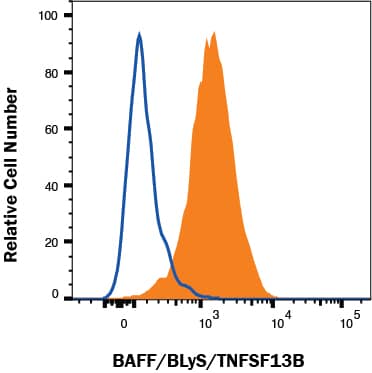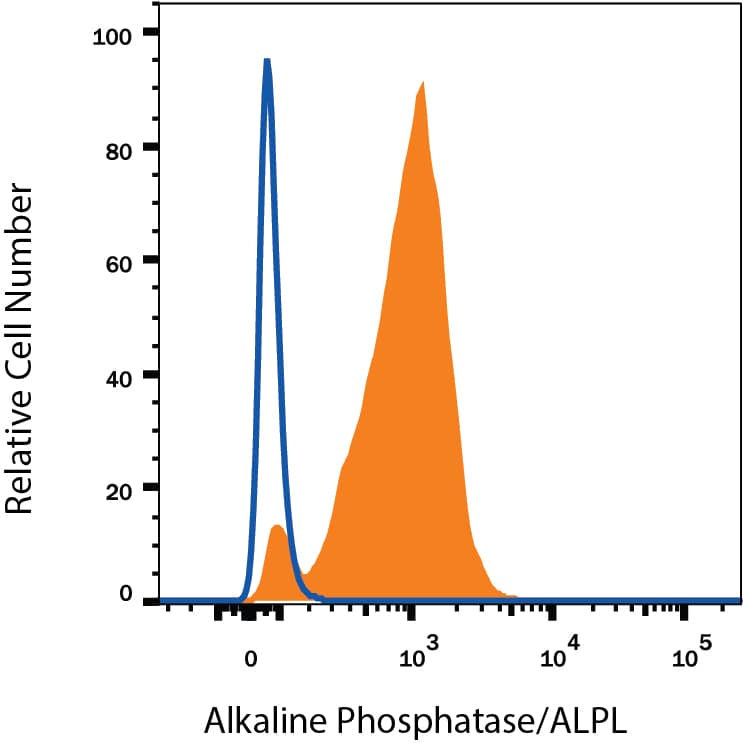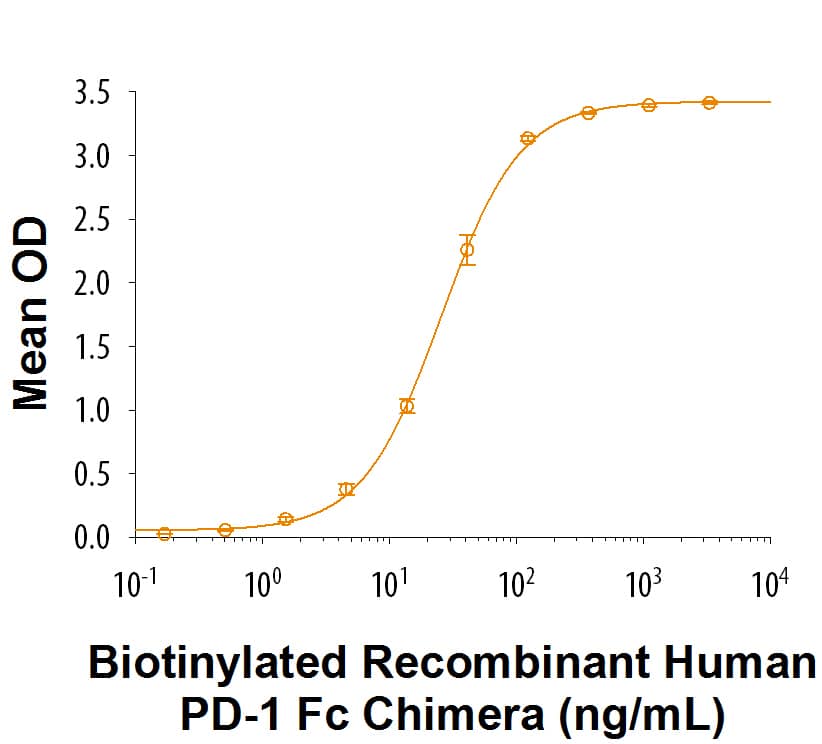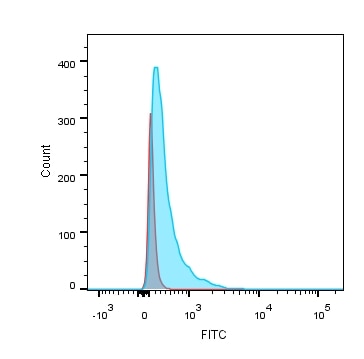Mouse BCMA/TNFRSF17 Fluorescein-conjugated Antibody Summary
Met1-Thr49
Accession # O88472
Customers also Viewed
Applications
Please Note: Optimal dilutions should be determined by each laboratory for each application. General Protocols are available in the Technical Information section on our website.
Scientific Data
 View Larger
View Larger
Detection of BCMA/TNFRSF17 in Mouse Splenocytes by Flow Cytometry. Mouse splenocytes were stained with Rat Anti-Mouse BCMA/TNFRSF17 Fluorescein-conjugated Monoclonal Antibody (Catalog # FAB593F) and Rat Anti-Mouse B220/CD45R APC-conjugated Monoclonal Antibody (Catalog # FAB1217A). Quadrant markers were set based on control antibody staining. View our protocol for Staining Membrane-associated Proteins.
Preparation and Storage
Background: BCMA/TNFRSF17
BCMA (B Cell Maturation Antigen), also known as TNFRSF17, is a 22-26 kDa member of the TNFR superfamily. It is a type III transmembrane (TM) protein one that is synthesized as a type I TM protein that has a restricted expression pattern. Among the cells recognized to express BCMA are bone marrow plasma cells (PCs), adipocytes and stratum basale keratinocytes. At least some human BCMA is now known to be N-glycosylated, a modification that affects both its affinity for ligand, and its half-life on the cell surface. Mouse, by contrast, has no potential N-linked site, and any glycosylation would have to be either O-linked, or N-linked through the generation of an alternative splice form. In any case, and although the predicted MW of mouse BCMA is 20 kDa, it appears to run anomalously at 22-26 kDa in SDS-PAGE. Mouse BCMA is 185 amino acids (aa) in length. It contains a long, 115 aa cytoplasmic region and a short 49 aa extracellular domain characterized by two cysteine-rich segments. Ligands for BCMA are trimers, and include APRIL and BAFF homotrimers, plus APRIL:BAFF heterotrimers. In human, BCMA is known to be proteolytically cleaved and released, acting as an antagonist to APRIL AND BAFF signaling; in mouse, it is unclear if cleavage occurs. BCMA activation on PCs promotes PC survival, while on adipocytes, BCMA signaling downregulates adiponectin and leptin production, and on keratinocytes, BCMA ligation induces IL-6 and GM-CSF secretion. Over aa 1-49, mouse BCMA shares 65% and 90% aa sequence identity with human and rat BCMA, respectively.
Product Datasheets
Citations for Mouse BCMA/TNFRSF17 Fluorescein-conjugated Antibody
R&D Systems personnel manually curate a database that contains references using R&D Systems products. The data collected includes not only links to publications in PubMed, but also provides information about sample types, species, and experimental conditions.
8
Citations: Showing 1 - 8
Filter your results:
Filter by:
-
Neutrophil metalloproteinase driven spleen damage hampers infection control of trypanosomiasis
Authors: Pham, HTT;Magez, S;Choi, B;Baatar, B;Jung, J;Radwanska, M;
Nature communications
Species: Mouse
Sample Types: Whole Cells
Applications: Flow Cytometry -
Homeostatic apoptosis prevents competition-induced atrophy in follicular B cells
Authors: S Chappaz, K McArthur, L Kealy, CW Law, M Tailler, RM Lane, A Lieschke, ME Ritchie, KL Good-Jacob, A Strasser, BT Kile
Cell Reports, 2021-07-20;36(3):109430.
Species: Mouse
Sample Types: Whole Cells
Applications: Flow Cytometry -
PD-L1hi B cells are critical regulators of humoral immunity.
Authors: Khan A, Hams E, Floudas A, Sparwasser T, Weaver C, Fallon P
Nat Commun, 2015-01-22;6(0):5997.
Species: Mouse
Sample Types: Whole Cells
Applications: Flow Cytometry -
Transcription elongation factor ELL2 drives Ig secretory-specific mRNA production and the unfolded protein response.
Authors: Park K, Bayles I, Szlachta-McGinn A, Paul J, Boiko J, Santos P, Liu J, Wang Z, Borghesi L, Milcarek C
J Immunol, 2014-09-19;193(9):4663-74.
Species: Mouse
Sample Types: Whole Cells
Applications: Flow Cytometry -
Impaired B cell receptor signaling is responsible for reduced TACI expression and function in X-linked immunodeficient mice.
Authors: Uslu K, Coleman A, Allman W, Katsenelson N, Bram R, Alugupalli K, Akkoyunlu M
J Immunol, 2014-03-19;192(8):3582-95.
Species: Mouse
Sample Types: Whole Cells
Applications: Flow Cytometry -
Secreted IgM enhances B cell receptor signaling and promotes splenic but impairs peritoneal B cell survival.
Authors: Notley CA, Baker N, Ehrenstein MR
J. Immunol., 2010-03-05;184(7):3386-93.
Species: Mouse
Sample Types: Whole Cells
Applications: Flow Cytometry -
FcgammaRIIB signals inhibit BLyS signaling and BCR-mediated BLyS receptor up-regulation.
Authors: Crowley JE, Stadanlick JE, Cambier JC, Cancro MP
Blood, 2008-09-12;113(7):1464-73.
Species: Mouse
Sample Types: Whole Cells
Applications: Flow Cytometry -
Deficient TACI expression on B lymphocytes of newborn mice leads to defective Ig secretion in response to BAFF or APRIL.
Authors: Kanswal S, Katsenelson N, Selvapandiyan A, Bram RJ, Akkoyunlu M
J. Immunol., 2008-07-15;181(2):976-90.
Species: Mouse
Sample Types: Whole Cells
Applications: Flow Cytometry
FAQs
No product specific FAQs exist for this product, however you may
View all Antibody FAQsIsotype Controls
Staining Reagents
Reviews for Mouse BCMA/TNFRSF17 Fluorescein-conjugated Antibody
Average Rating: 4.7 (Based on 3 Reviews)
Have you used Mouse BCMA/TNFRSF17 Fluorescein-conjugated Antibody?
Submit a review and receive an Amazon gift card.
$25/€18/£15/$25CAN/¥75 Yuan/¥2500 Yen for a review with an image
$10/€7/£6/$10 CAD/¥70 Yuan/¥1110 Yen for a review without an image
Filter by:


















